Sustainable Organizing Practices for the Environmentally Conscious Client
This page may contain links to Amazon.com or other sites from which I may receive commission on purchases you make after clicking on such links. Read my full Disclosure Policy
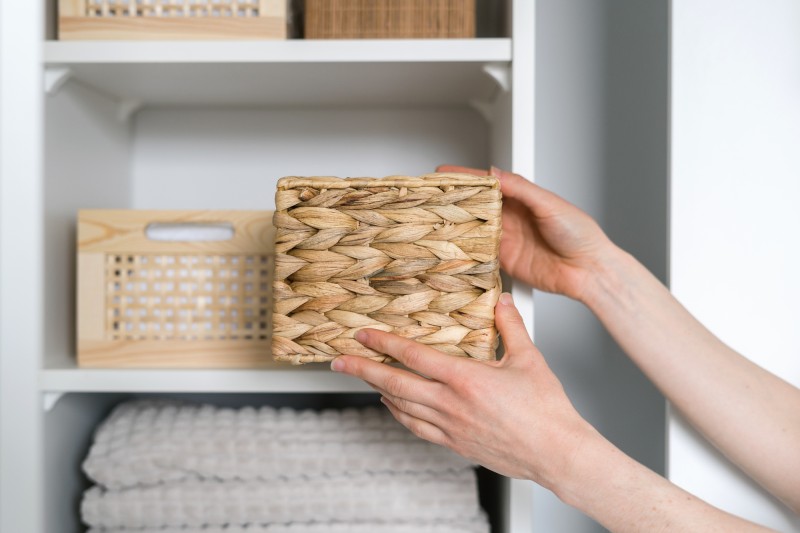
The art of organizing isn’t just about creating aesthetically pleasing spaces anymore. Nowadays you need to cultivate a lifestyle that respects and cares for our planet.
The average person generates over 4.9 pounds of waste per day, with a staggering 34.5% of said waste ending up in landfills where it sits, unyielding for decades.
Those alarming statistics show us why it is important to adopt sustainable organizing practices. It’s no longer just some good idea, it’s absolutely necessary.
This article goes into how you as a professional organizer can adopt sustainable practices that make a tangible difference.
If we all integrate eco-friendly methods into our organizing routines not only do we declutter our own spaces but also contribute positively to the world around us.
Understanding the Eco-Friendly Organizing Mindset
Embracing your role as a sustainable organizer requires a fundamental change in your mindset.
You need to make the mental shift from just organizing to making thoughtful decisions that reduce our ecological footprint.
That transformation begins with a genuine understanding of where our belongings come from, how they are used, and where they eventually end up.
You can’t just tell people to throw things away. You need to guide them so they consciously make decisions that consider the environment.
Educate them about the benefits of reusing and recycling, encourage them to think critically about what they truly need, and let them realize the potential in items they otherwise might’ve gotten rid of.
Strategies for Sustainable Decluttering
The 5 R’s – Refuse, Reduce, Reuse, Recycle, and Rot – are at the very core of any sustainable decluttering process.
Those are the things that help you and your clients make responsible choices.
- Refuse: This is all about prevention. Teach them to say No to the things they don’t need – especially if they’re not environmentally friendly. That alone prevents clutter from accumulating in the first place.
- Reduce: This where you remind your clients to keep only what is necessary or truly valuable to them. When they own less, they use less, and in turn, waste less.
- Reuse: Nobody wants those landfills to keep piling up. Ask them to consider if something can be repurposed before it is thrown away. Perfect opportunity to introduce some DIY projects.
- Recycle: If any item somehow manages to escape the first 3 options then recycling is the next best thing. Always make sure you’re teaching them how to recycle properly.
- Rot (Composting): For all the organic stuff like food scraps and yard waste, composting is a sustainable option.
Some of those things might already be familiar to you but I can’t overemphasize that this isn’t just about telling people what to do but helping them understand why.
People don’t build up clutter just because they want to. There are often some deeper reasons.
If you understand the underlying cause(s), you can help motivate them and guide them more effectively towards sustainable decluttering practices.
Eco-Friendly Storage Solutions
Once they’ve decluttered, the next step is storing everything that remains in an eco-friendly manner.
That means choosing storage solutions made from sustainable materials like bamboo, recycled plastic, or maybe some reclaimed wood. Or getting creative with the things they already have – old boxes, jars, etc.
This is also the part where you’re likely going to run into some friction because of the cost.
Sustainable materials are expensive.
But once again you need to shift from being a professional organizer to being a teacher. Do your best to highlight the long-term benefits and show that even though it may be expensive upfront, they actually don’t need to be replaced frequently.
Which leads me to..
Guiding Your Clients in Sustainable Lifestyle Choices
I hope you’re starting to realize that your role as a sustainable organizer extends beyond just rearranging spaces.
You are in a unique position – which is the opportunity to inspire and educate your clients about the broader impact of their choices, both in organizing and in their daily lives.
Teach them about sustainable habits, mindful consumption, the concept of a circular economy, the list goes on and on.
You could even collaborate with other brands or services that prioritize sustainability.
You now have a multifaceted role as a professional organizer, an educator, and an advocate for sustainable living.
That’s how you add depth to your service.
Digital Organization for the Environmentally Conscious
This goes beyond the scope of this article but you need to be aware sustainable organizing isn’t just physical. You also need to think about digital clutter.
They both actually complement each other in their own subtle way.
The 5 R’s of sustainability still apply here and digital decluttering can actually help reduce the need for physical storage.
Things like going paperless, energy-efficient devices, responsibly recycling electronics, and organizing digital files all contribute to a greener lifestyle.
Success Stories in Sustainable Organizing
The stories below are great examples of how you too can integrate sustainability into your practice.
1 – Declare Order
Leslie Hatch Gail, the founder of Declare Order Professional Organizing, specializes in creating sustainable, compassionate solutions for hoarding situations and supporting individuals with brain-based conditions.
Her approach goes way beyond traditional organizing and focuses on understanding a very unique set of needs.
I think it’s a great example of how sustainable organizing can be adapted to address intricate and sensitive situations.
2 – YOB Case Studies
There are several case studies on here that cover a wide range of scenarios from client interactions to personal organizing journeys.
The great thing about those stories is they demonstrate how you can use different strategies to meet distinct challenges and preferences.
You can use them for insight into how you would apply your own sustainable touch.
Conclusion
Sustainable organizing is a necessary shift in how we interact with our spaces and possessions. When you adopt and promote eco-friendly practices, you play a crucial role in fostering a more sustainable future.
The change starts with you as a professional organizer, in your home, your office, and extends to every client interaction.
It’s a commitment that begins with your own decisions and radiates outwards.
You now have the opportunity to lead by example and showcase how organization can be harmoniously aligned with the environment.
Photo by brizmaker / DepositPhotos

Join the Community
Did you find this post helpful?
Sign up to get new posts by email every week!




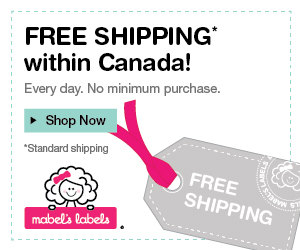
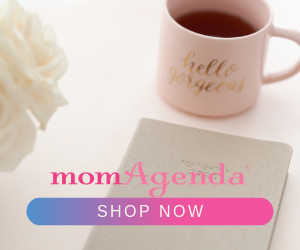

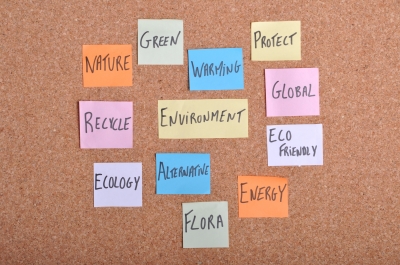
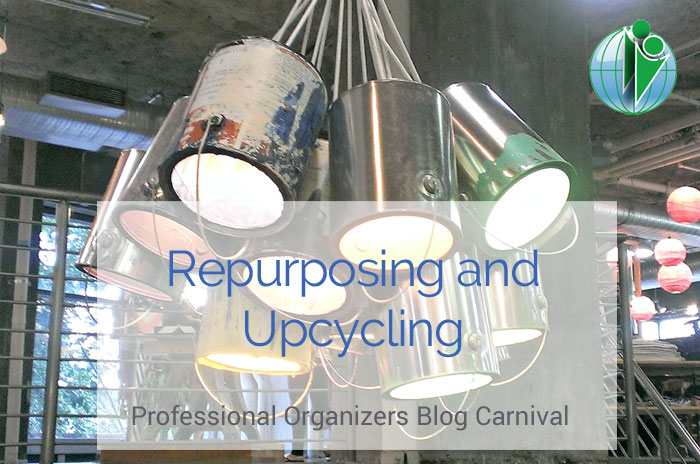

I’m loving that there are a couple of new “Rs” here! New to me are “Refuse,” which is really the most effective way to cut down on clutter, and then “Rot,” which is just starting to take off in my town. We have food scrap recycling bins at our town transfer station, and we can take any food waste, as long as it is in compostable bags. You don’t realize how much food waste you have until you start collecting it. I’m hoping that it will be picked up by the trash haulers some day.
I was really excited when they introduced green bins for compostable waste here, but it didn’t go well. First, the compostable bags we bought to line the kitchen bin would sometimes start to break down before they were full enough to take out. Putting paper towels between the bin and the liner helped. Then one day, when I opened the outdoor bin to put my bag in, a gust of wind blew mold spores right in my face and up my nose – I felt sick right away, and I never did it again. Some time later, the program was discontinued. I don’t know why, but I suspect it was because of people who just toss any trash in any bin.
Sounds like a rough experience. I’d say “room for improvement” on this one. Hopefully the process will become easier in the future.
Rot is indeed an eye-opener and you are right, the bigger question is what happens after all of the waste is picked up? I’ve noticed the problem sometimes isn’t the lack of a waste management program but having the infrastructure to keep it sustainable. So many challenges on a large scale but I think that’s where public participation and education comes in.
Love this Janet! We recently signed up with Ridwell and so are able to recycle things we never could before. It feel SOO Good. 🙂
I hadn’t heard of Ridwell and had to look it up. It sounds like a great service!
I love this and all your simple but yet required things to do in order to stay organized. Buy nothing groups are great to pass along items to your neighbors, someone will always find a use to them.
I have given and received many useful items through one of those groups.
What excellent advice! Awareness is the first step (for the organizer and their clients). Not all clients are open to this level of sustainability and eco-friendliness. I find that the younger clients (50 and younger) absolutely are. But clients in the 50-90+ range aren’t necessarily. So, while education is important, you also need to find a balance between what the client is willing and able to do. Even so, you made me aware of how I can help facilitate those changes.
Linda, you’ve reminded me of one of my organizing clients. It was my practice to separate paper from regular garbage. He wanted me to just toss it all in large trash bags. I hated doing that, but I suppose he was concerned that it would cost too much if I took the time to separate everything.
Five Rs instead of three! Refuse is a concept with which we’re all familiar with as organizers, though I’m not sure I’ve ever seen it included, and “Rot” is definitely new. (In 22 years, I think I’ve had two clients who composted and both lived in very rural areas.) I live and work at the nexus of multiple counties/states with varying infrastructure for any kind of recycling. More than 1/3 to 1/2 half my clientele has no recycling pickup available to them, and a large portion of those clients are elderly and lack the ability to haul recycling to a recycling center, either due to physical limitations or no longer driving. The less they bring in, the less there is to deal with, of course, but sustainable grocery and home products are more expensive than plastic. It’s wearying!
These are obviously important issues, though there’s a careful balance to be made, as a firm focus on sustainability can make some clients unwilling to get rid of anything out of fear for the planet. (I try to explain that while “every little bit helps,” corporate policies regarding the environment vastly outweigh anything that we as individuals can do. Otherwise, emotionally fragile clients can be stuck, fearful that anything will end up not being reused.)
Similarly, I find that many clients who care as much or more about aesthetics than about function tend to reject the sustainability of reusing containers; they want most things to be decorative and high end/designer. Thus, we must educate, but we should always be aware of what’s realistic for the client situation. I suspect Refuse and Reduce will always be our most effective allies, across the board, for helping our clients with these endeavors.
Wow! We’ve had curbside recycling of a lot of things for decades, and I can’t imagine not having that as a free and easy option. And whether we’re talking about containers or other consumer goods, I do try to choose what’s best for the planet, and my community, and all those considerations, but sometimes I just can’t resist an option that’s more appealing or even more convenient.
You are right, Janet. Organizers are in a unique position to help with sustainability practices. I have some clients that are open to it and some that aren’t. Some of my clients over purchase which is very difficult to witness on so many levels. It does not serve them well and it certainly doesn’t serve the environment well. I feel that the first step for those clients is simply awareness. It might take them a while to get to a change point. I try to meet clients where they are by supplying education versus preaching. Providing sustainable options such as haulers that will take items to charities is one example. Another is to provide bamboo storage options whenever possible. Demonstrating to clients that they aren’t using a certain category of items is another way to show how reducing could be helpful. I must admit that sustainability is not always the top concern when working with clients that have huge excess and trouble letting go. But I try where I can.
That sounds like a good approach, Jill. Nobody wants to be preached to by a service professional, especially if it’s not directly related to the pain point they contacted you about. Someone did that to me once, and I never hired her again.